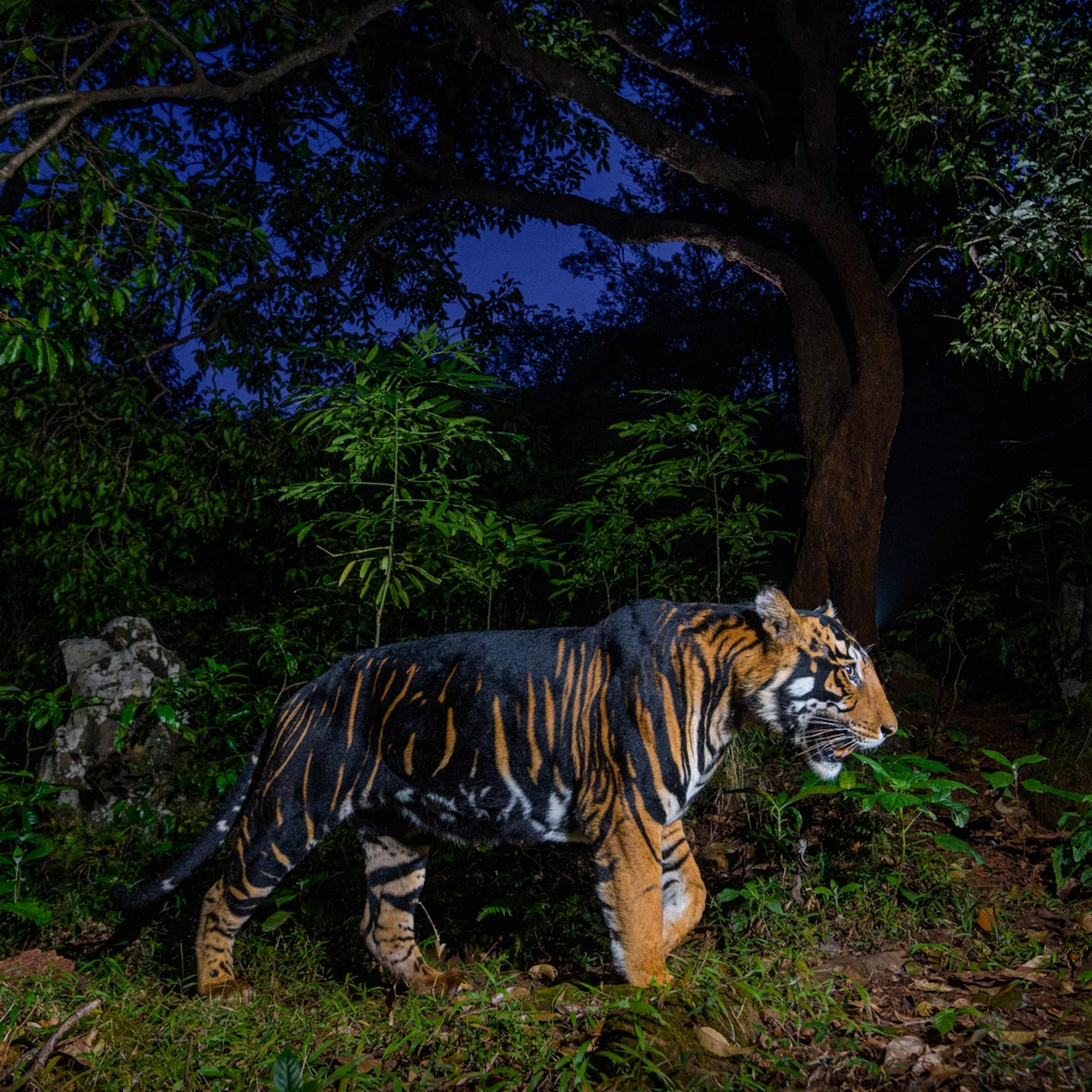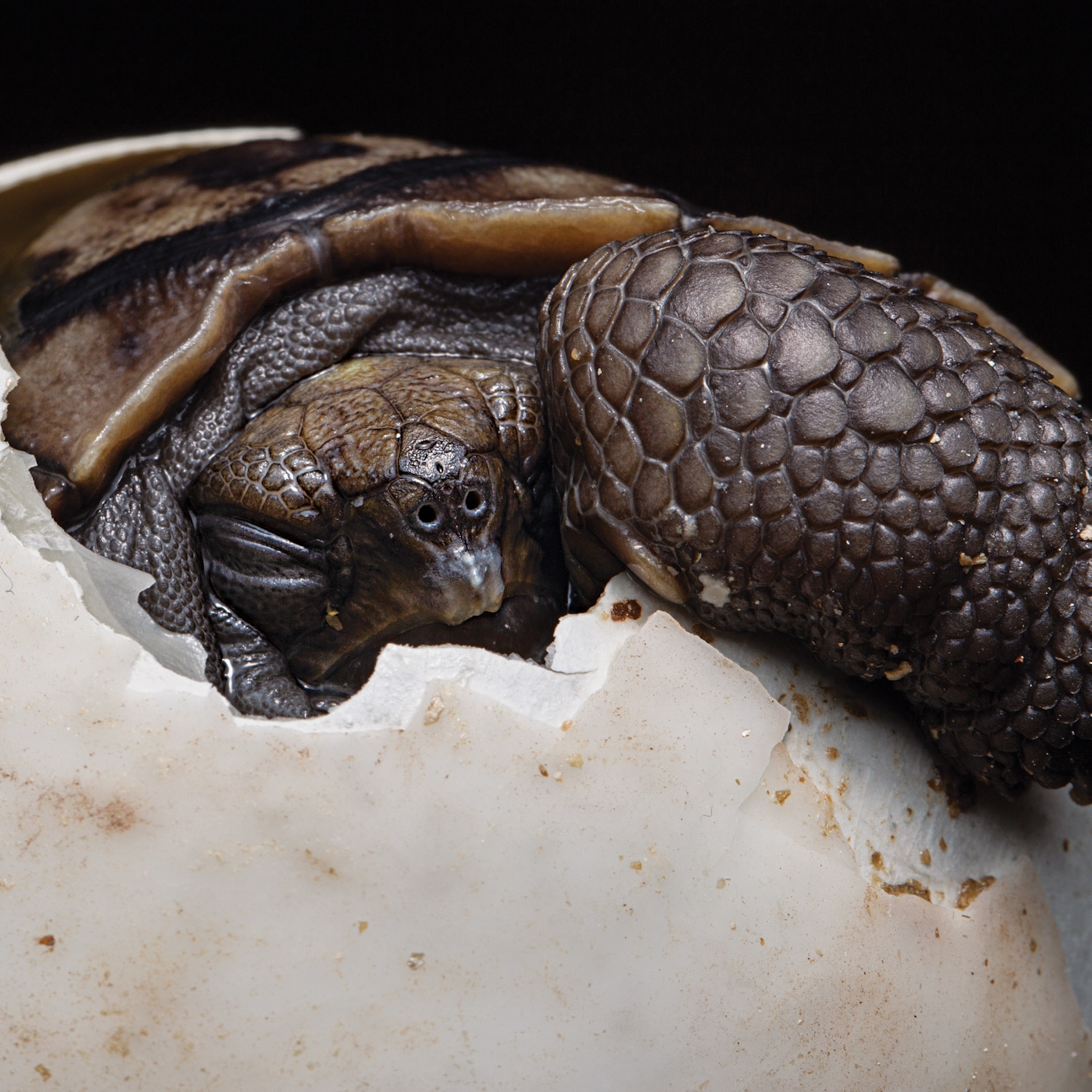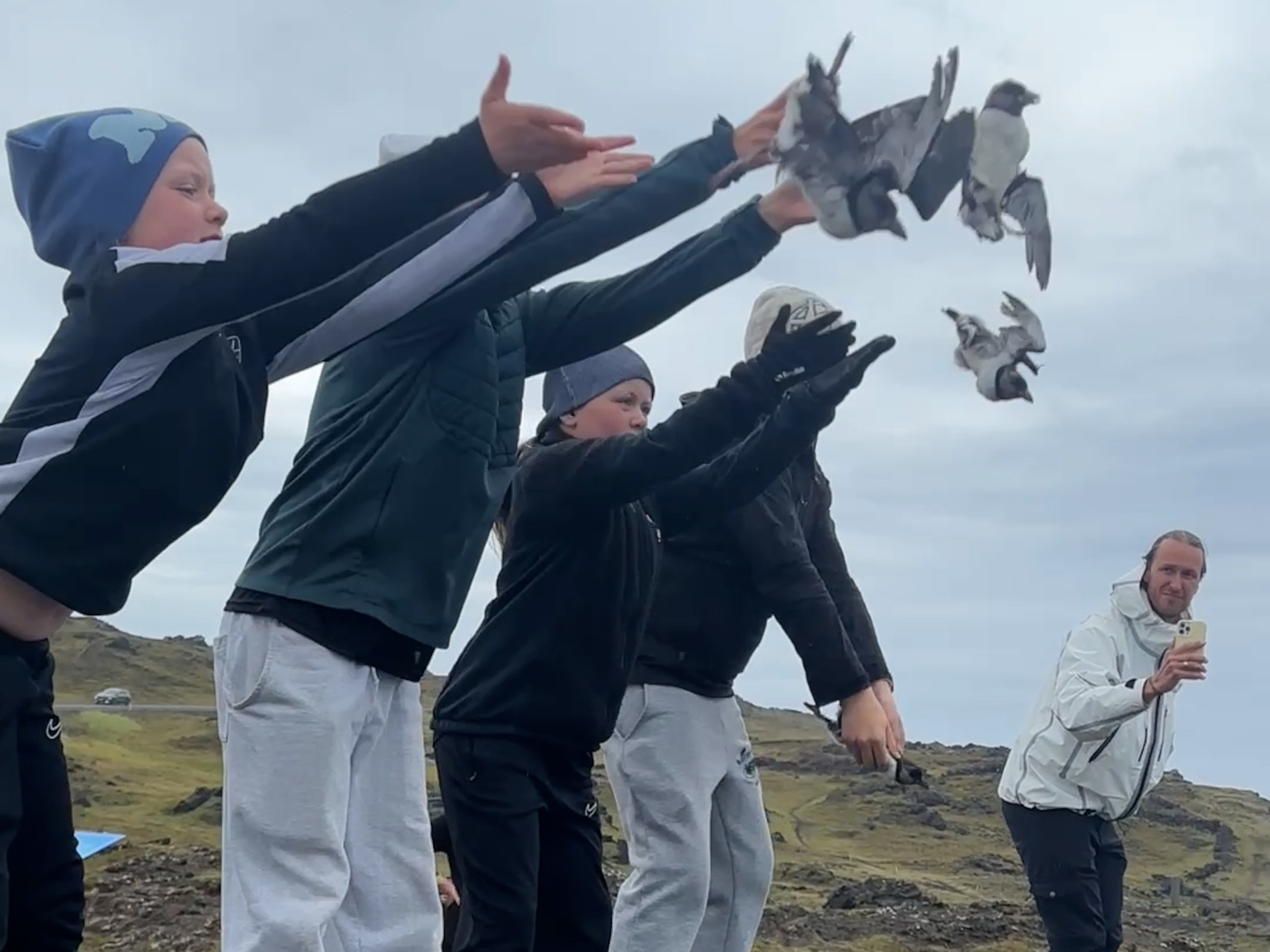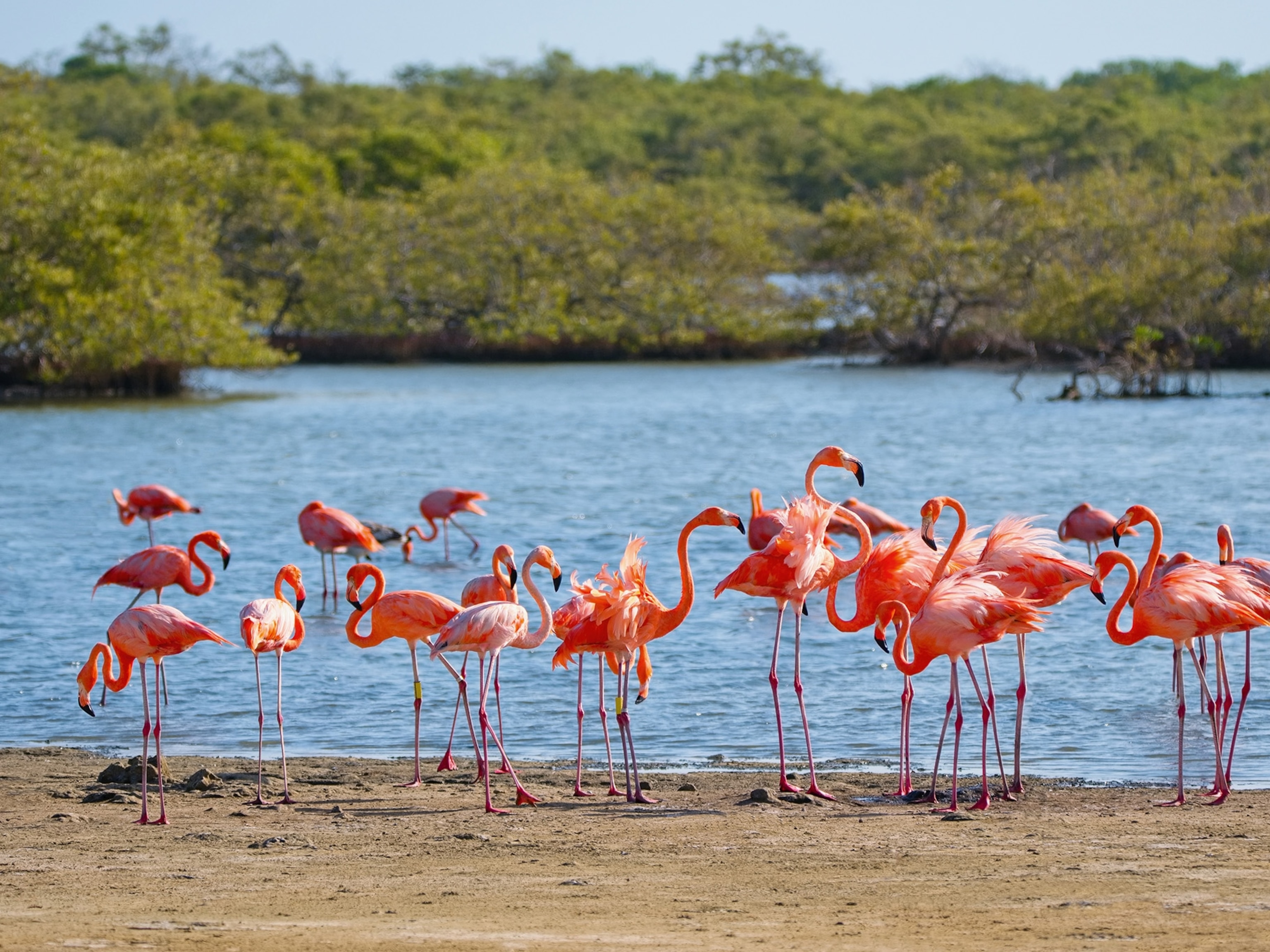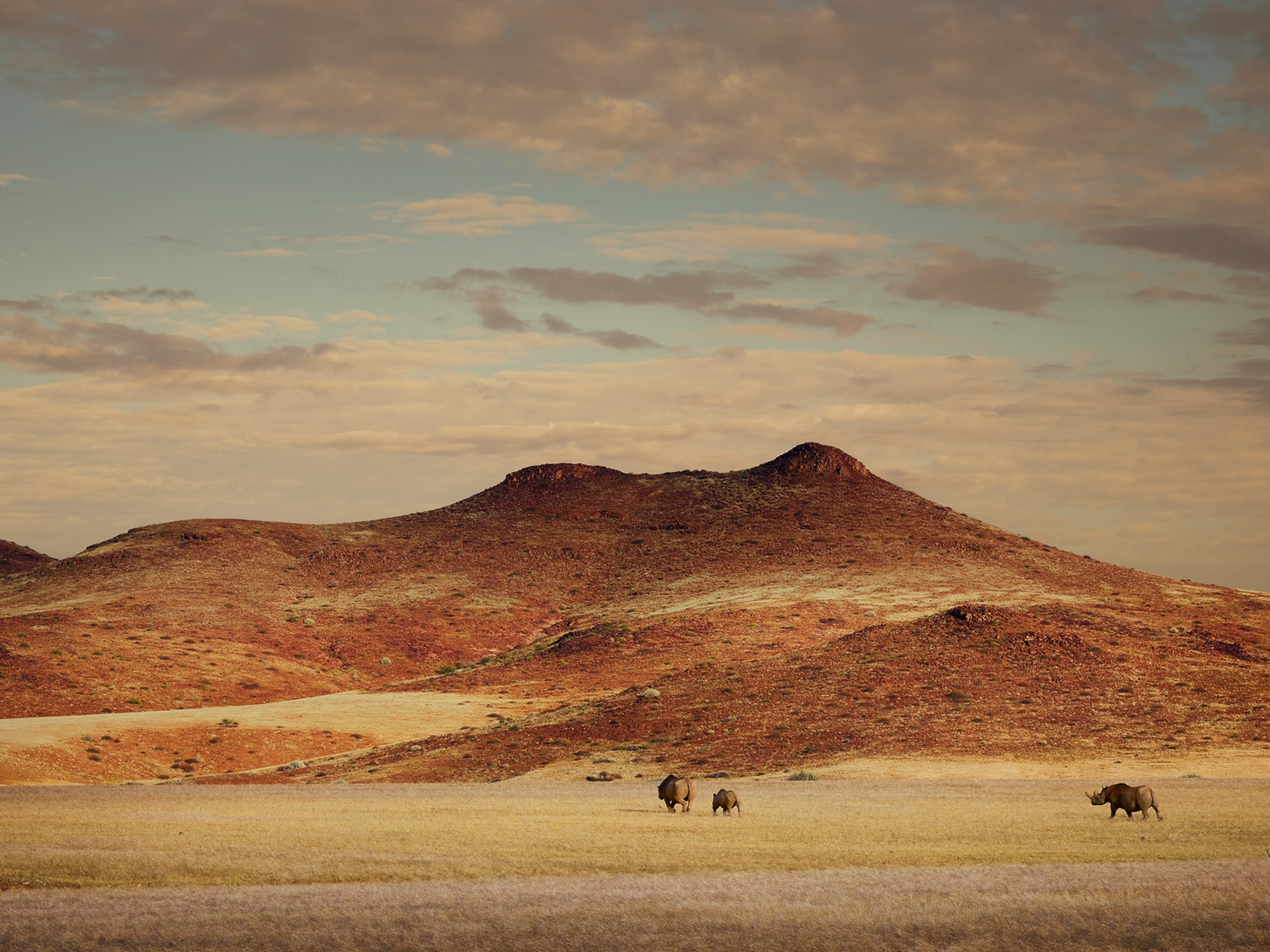Critical pelican nesting ground restored, 10 years after BP oil spill
Louisiana has lost more than half its brown pelican colonies in the past decade. Using fines from the spill, an important island habitat gets a makeover.

Queen Bess Island, LA. — Todd Baker was anxious. It was late February 2020, and the pelicans still hadn’t returned. Three weeks earlier, Baker, a biologist with the Louisiana Department of Wildlife and Fisheries, had stood in a hard hat and yellow fluorescent construction vest among a string of dignitaries as Louisiana governor John Bel Edwards declared Queen Bess Island restored.
“There were lots of high fives and handshakes,” Baker said. “But I wasn’t ready to celebrate yet.” Not until the pelicans showed up.
Queen Bess Island is a wisp of sand in Barataria Bay northeast of Grand Isle, a two-hour drive south of New Orleans. As one of the largest brown pelican colonies in Louisiana, it’s a crucial nesting ground for the species. Last year, after years of hurricanes, coastal erosion, land subsidence hastened by oil and gas extraction—and fouling in 2010 by the largest oil spill in U.S. history—it had become so degraded that nesting pelicans were able to use only five of its 37 acres.
BP paid a total of $20.8 billion in the Deepwater Horizon oil spill settlement, finalized in 2016. Now that money is providing an unprecedented opportunity not only to repair some of the damage from the spill but also to preserve and protect the Gulf ecosystem from future threats, including erosion, fierce storms, and sea level rise because of climate change. Louisiana loses a football field of coastline every hundred minutes, on average—an often quoted fact illustrating the environmental cost of building earthen containment berms along the Mississippi River and its delta tributaries since the 1770s, shifting the natural flow of land-building sediment into the Gulf. Shores shaped by the natural course of the river are eroding as they’re lashed by storms and hurricanes, and coastal land is sinking as oil and water are sucked from deep beneath the seafloor.
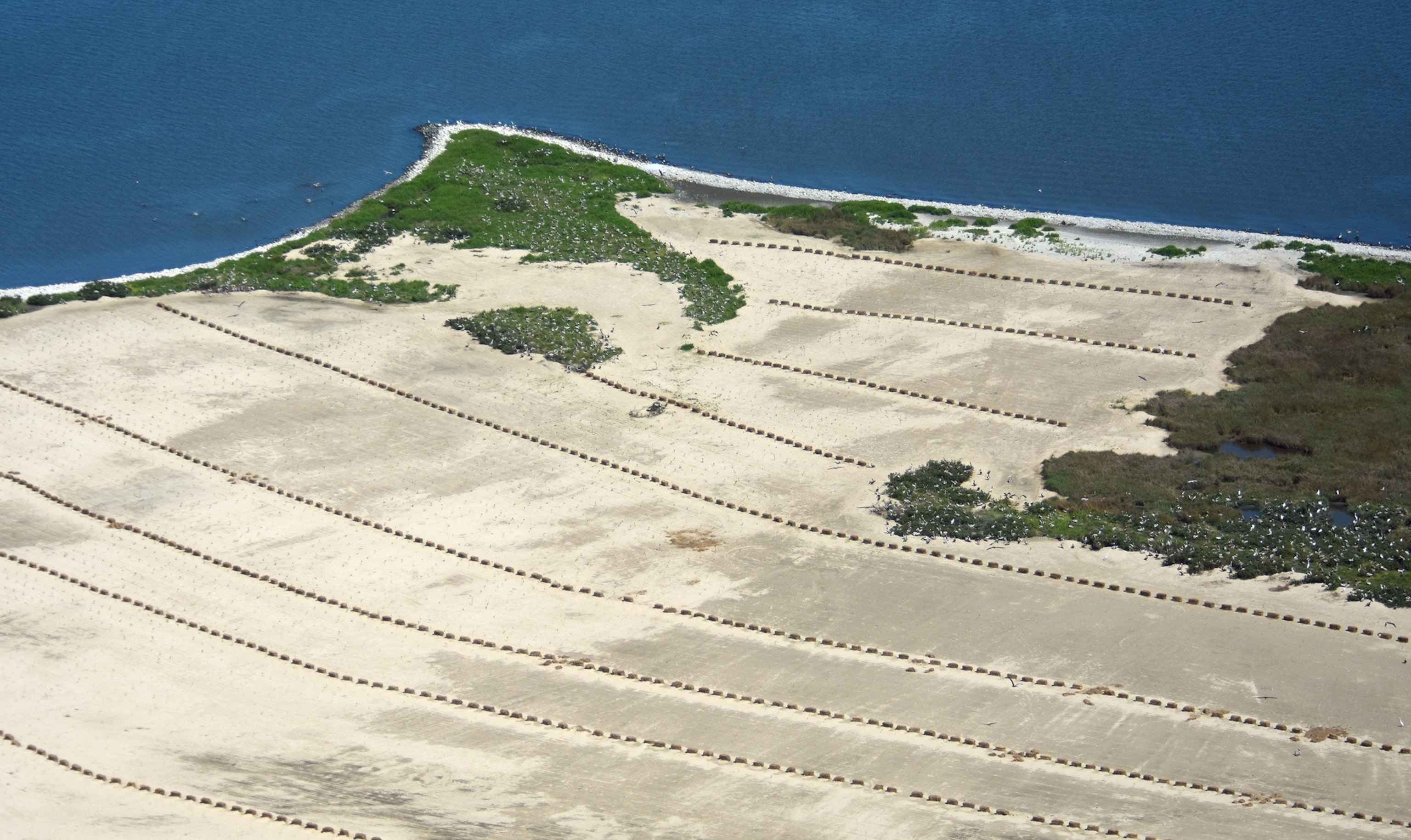
Queen Bess Island is the first restoration project, supported by $200 million from the spill settlement slated specifically for bird conservation in Louisiana. After three years of planning, the unprecedented $18.7 million gamble to redesign and rebuild the island began in September 2019, at the end of the pelican nesting season.
“We didn’t know if it would work, because we’d never done anything like this before,” Baker said one March morning as he steered a 25-foot fiberglass boat on course for Queen Bess, two and half miles off the coast. “What we did know was that if we did nothing, this pelican nesting habitat was going to be gone.”
“This restoration is a huge deal,” was how Erik Johnson, Audubon Louisiana’s director of bird conservation, put it to me. “Thirty percent of the country’s eastern brown pelicans nest in Louisiana,” he said. “Queen Bess and two other islands support 70 percent of those birds, which means Queen Bess supports a huge percentage of the pelicans in the country. There’s no other project as consequential for brown pelicans.”
Johnson estimates that Louisiana has lost more than 50 percent of its pelican colonies during the past decade. “In many cases, the islands are completely gone—they’re just open water now,” he said. “We used to see pelicans dispersing to other islands when one would disappear, but we’re not seeing that as much now … which is why restoration projects like Queen Bess are so important.”
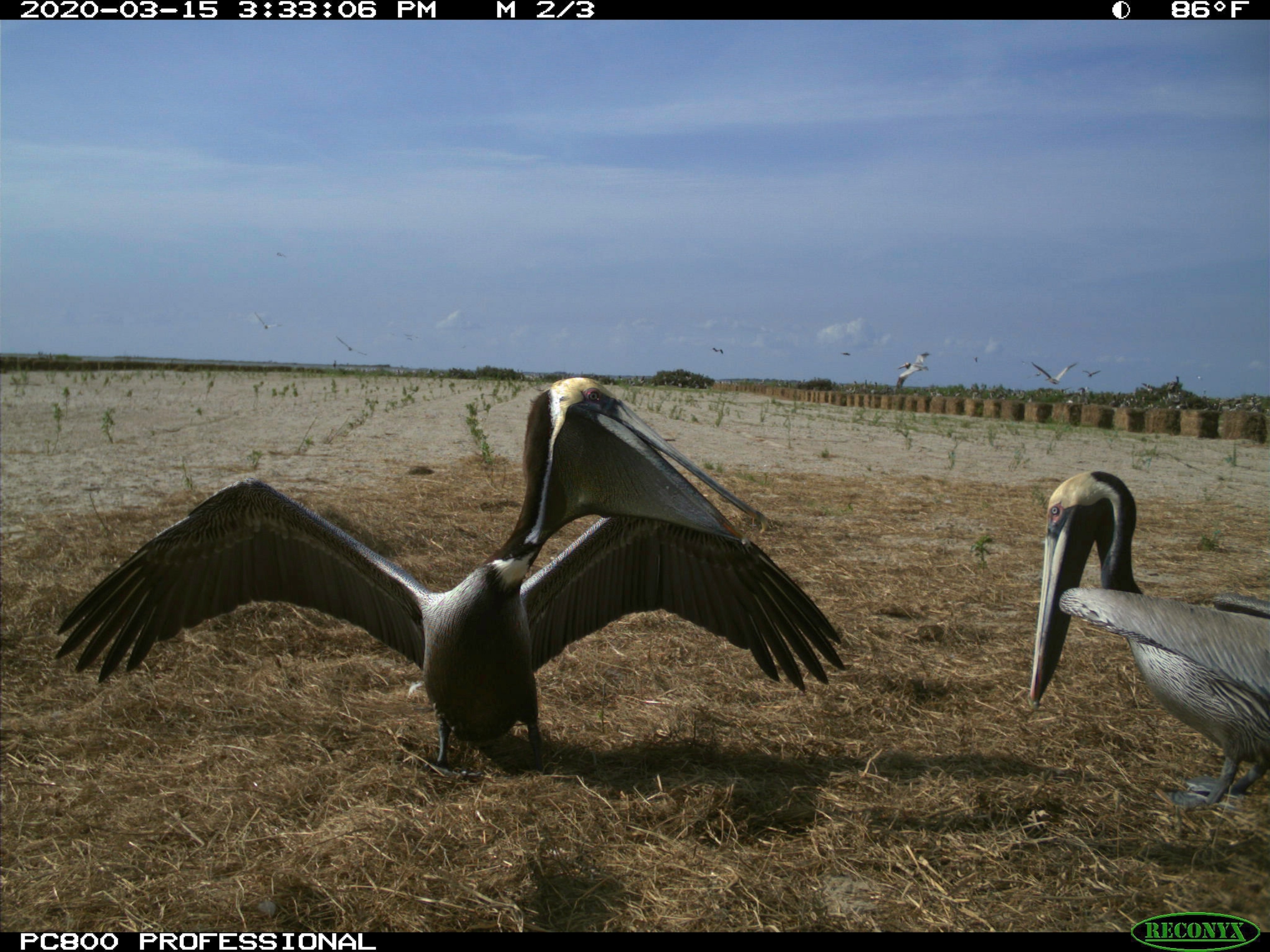
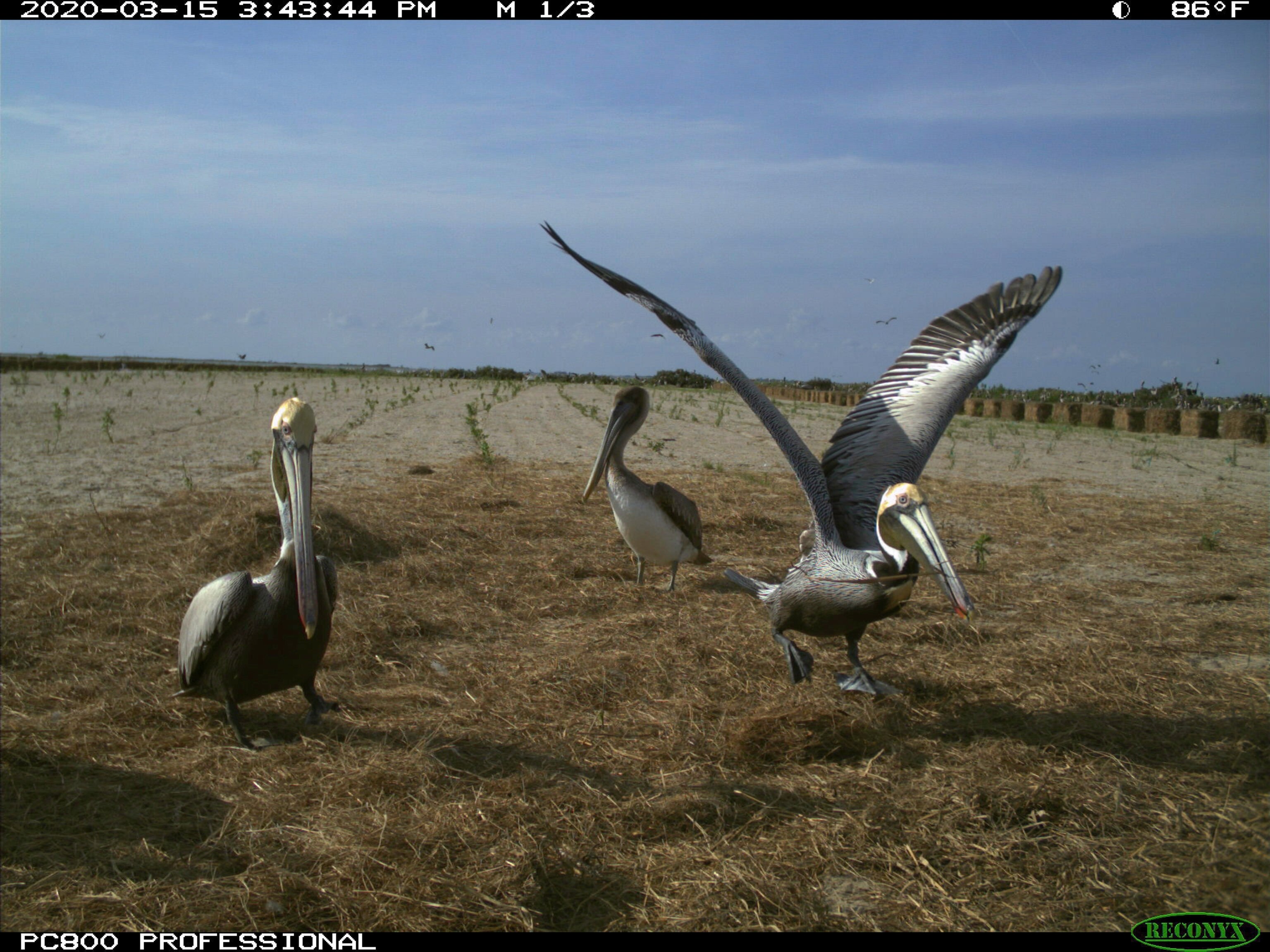
Big-billed and stocky, brown pelicans are the jumbo jets of the bird world—a marvel of design, capable of soaring high and performing complex aerial maneuvers. Genetic evidence pegs their closest living relatives as the shoebill, a bizarre behemoth found in central Africa that eats baby crocodiles, and a graceful, medium-size wader called the hamerkop, native to coastal West Africa and Madagascar. With adaptations for surviving freefalls, including airbags in its neck, a pelican can spy a meal from 65 feet above the water, plunge headfirst, and surface seconds later with a fish in its foot-long bill. The fibrous sac hanging from the bill is sometimes mistaken for a built-in lunchbox that stores food, but it’s more like a fishing net that drains water as the bird tosses its head back and gulps.
The makeover of Queen Bess Island in the wake of the BP oil spill serves as a microcosm of the pelicans’ rise and fall in the United States—and of challenges they still face, particularly habitat loss and rising seas. During the late 1800s and early 1900s, pelicans and other water birds were shot by the millions for their plumes used to decorate women’s fashionable hats and dresses. During the 1960s, the pelicans and a host of other wild creatures succumbed to the widespread use of pesticides—DDT, in particular—that impeded their reproduction.
In 1970, brown pelicans were among the first species to be classified as endangered under the Endangered Species Preservation Act, precursor to the Endangered Species Act. This provided funding and resources toward projects to help them recover. Two years later when the U.S. banned most uses of DDT, the pelicans’ turnaround gathered momentum.
At last, on November 9, 2009, then-Secretary of the Interior Ken Salazar strode to a podium in New Orleans to announce the triumphant end of a decades-long struggle. “At a time when so many species of wildlife are threatened, we once in a while have an opportunity to celebrate an amazing success story,” he told the audience gathered at a press conference to announce the removal of the brown pelican from the Endangered Species List. “Today is such a day. The brown pelican is back.”
Jubilant officials declared the pelican’s 2009 removal from the list to be one of the greatest environmental success stories of our time. After nearly vanishing, brown pelicans were once again perching like sentinels on docks and buoys, plunging headlong into the sea for fish, winging low over beaches at sunset, and raising fuzzy white chicks on secluded islands.
‘A fleeting celebration’
On April 20, 2010, BP’s Deepwater Horizon oil rig exploded, killing 11 workers and triggering a spill that would spew some 4.9 million barrels of crude—equal to the volume of 12 Exxon Valdezes—across more than 43,000 square miles of water. By some estimates, more than a million birds died in the months after the accident, including 12 percent of the northern Gulf of Mexico’s brown pelican population.
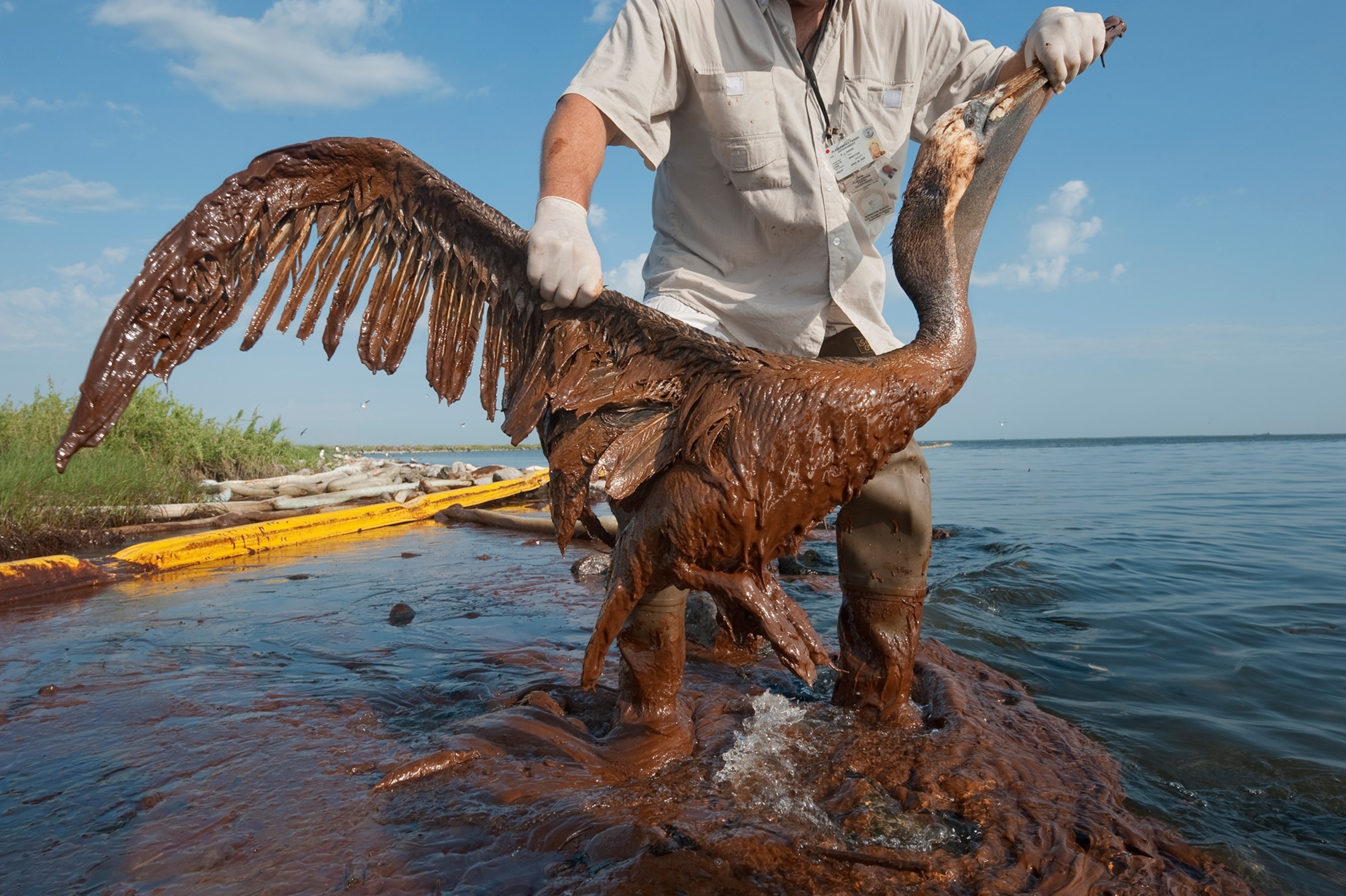
Todd Baker was working on an earlier spill at the mouth of the Mississippi River on April 21 when he heard the news of an overnight explosion on the Deepwater Horizon. He quickly dispatched a team of biologists by boat and plane to assess and identify the most vulnerable bird nesting colonies in the potential path of the oil. They mapped the locations of those islands for the Coast Guard and BP officials as they deployed protective booms to prevent the oil from swirling ashore where thousands of pelicans, roseate spoonbills, reddish egrets, and other birds were raising chicks.
“We wanted to be proactive,” Baker said, cruising along Queen Bess’s coastline, where porpoises were playing around the breakwaters. “But it didn’t take long for the oil to wash over the booms and hit the shores. Almost immediately, we started picking up oiled birds.”
Baker, who was wearing duck boots, Wrangler jeans, and a baseball cap, motioned toward the island’s rocky shoreline. “I was right over there trying to pluck birds from the edge of the colony,” he said, remembering how he’d sweated in a Tyvek suit, gloves, and rubber boots as he paddled a flat-bottomed boat in the shallows to rescue injured birds. The beaches were stained reddish-brown and black, and the stench of crude oil burned his nostrils. “Back then,” he said, “looking at all the impacts from the oil, you had to wonder, how the heck are we ever going to restore all this?”
When the tar balls rolled ashore on Queen Bess, thousands of birds were nesting. “I didn’t realize you could pack so many birds on such a small piece of real estate,” Baker said of the scene that spring. “It was like an apartment building, with brown pelicans on the top of the bushes, roseate spoonbills in the middle, and little birds running all along the bottom. It was impressive, but it wasn’t a good thing because the island was so overcrowded, and it became so heavily oiled. You’d be hard pressed to find other areas that were oiled worse than Queen Bess.”
Reports of oiled birds streamed in, and Baker’s agency took a lot of criticism for not rushing to save every one. “People didn’t realize the colonies have thousands of birds, and when you approach, they explode off the nests,” he said. “We made a conscious effort not to go in and disrupt the entire colony just to save one or two. But if a bird was on the edge of the colony, we’d paddle in and pluck it off with a long-handled net. Queen Bess was one of the few colonies where we did that a few times.”
The birds were stowed in crates for safe transport to the mainland, where rescue workers gave them food and water and rest before a multicycle deep clean and rinse. The lucky birds that made full recoveries were fitted with numbered red leg bands and released far outside the oiled areas, in Georgia, Florida, Texas, and eventually southwestern Louisiana. Birds too injured to be released found homes in zoos.
“Only about half of the roughly 3,000 rescued birds, of all of the species combined, from Louisiana and Alabama were successfully rehabilitated and released,” Audubon’s Erik Johnson told me, but no one knows how many of them survived. “I’ve personally seen two [banded] rehabilitated pelicans years later—one on a beach in Cameron Parish, and one on a nesting island in Tampa Bay, Florida.”
‘Inner circle of pelican society’
Florida was where ornithologist named Frank Chapman gave the first detailed accounts of brown pelican behavior on their island nesting grounds. In the early 1900s, Chapman used a portable blind to secretly watch and photograph birds in their natural realm. He wrote that when he stepped inside his blind, he entered the “inner circle of pelican society,” where the birds—oblivious to his presence and sometimes almost close enough to touch—went about their days building nests, mating, laying eggs, and raising gangly chicks. He noticed that the first nesters made their beds of sticks and grasses atop mangroves and shrubs; later arrivals were forced to settle on the ground, sometimes perilously close to the high-tide mark.
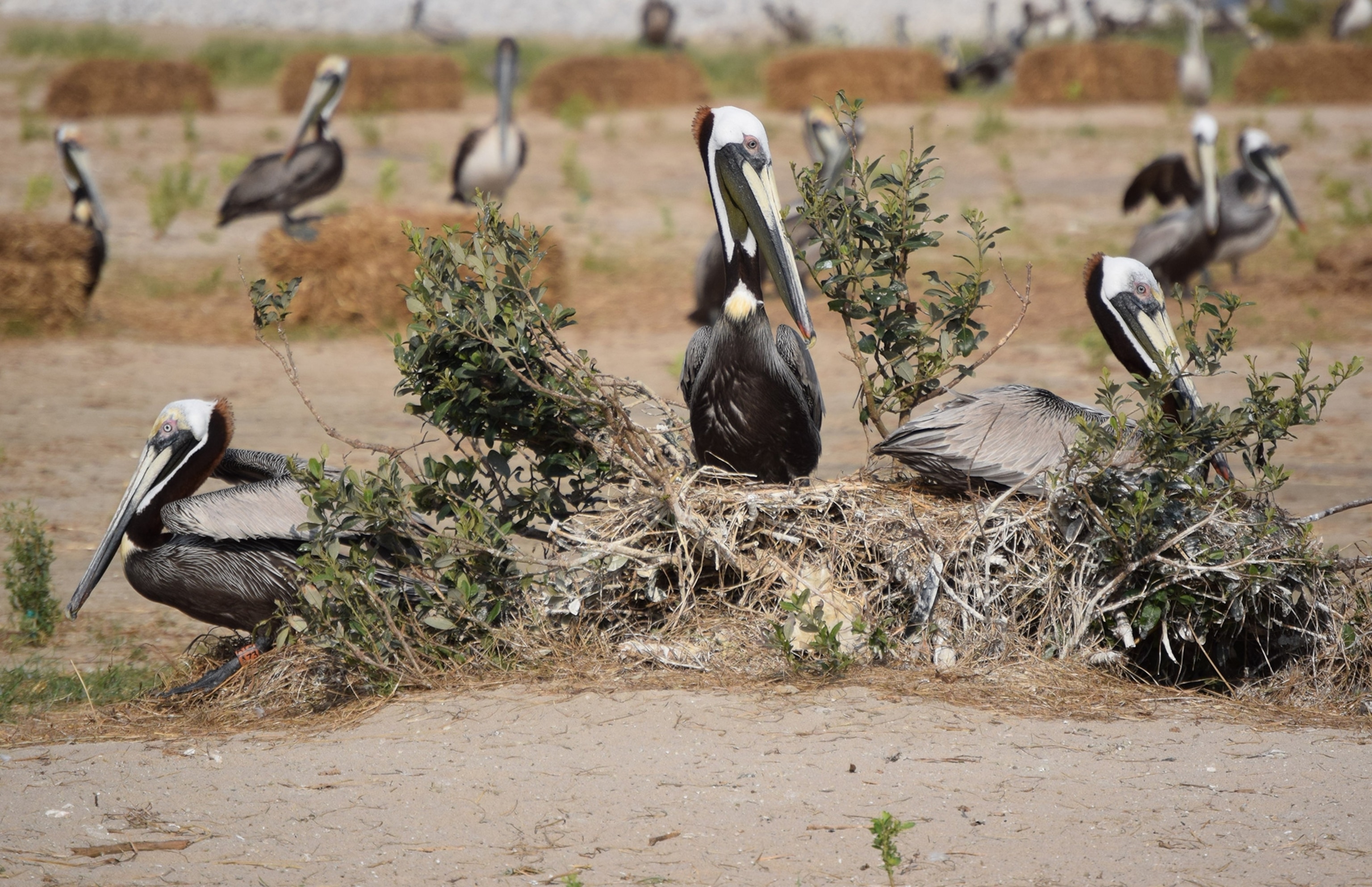
In addition to his nature studies, Chapman helped document a trend during the late 1800s that nearly drove pelicans and other “colonial” nesting birds to extinction. In the spring of 1886, while working for the American Museum of Natural History, in New York City, Chapman walked the streets of Manhattan surveying the types of feathers—and sometimes not just feathers but entire dead birds—adorning women’s hats. Chapman took meticulous notes, counting 40 native bird species—from orioles and robins to owls, woodpeckers, egrets, and herons—on three-quarters of 700 hats.
With some plumes selling for twice their weight in gold, the gunners, as the feather hunters were called, raided nesting rookeries and killed birds by the thousands. No laws were in place to protect the birds, and the public was largely unaware of the slaughter until Forest and Stream editor George Bird Grinnell raised the alarm in his magazine. Grinnell’s writings led to the creation of the National Audubon Society and a grassroots women’s movement to boycott feathered fashions. Laws such as the Lacey Act, passed in 1900, and the Migratory Bird Treaty Act, in 1918, made feather hunting illegal. The stock market crash in 1929 marked the end of the deadliest era in fashion.
Even as bird numbers began to rebound in the 1930s and 1940s, some species, including brown pelicans, were already facing another fateful threat: DDT and other pesticides running off farmlands into the Mississippi River. After World War II, when DDT was deployed to fight the spread of malaria and other infectious diseases in Europe, the chemical was adopted as a weapon against insect pests plaguing crops and gardens. The U.S. Environmental Protection Agency estimates that 1.35 billion pounds of DDT were sprayed in the country during the next three decades. It was cheap and efficient for killing insects but persisted in the environment, working its way up the food chain from invertebrates and insects to fish and birds. Large predatory birds such as bald eagles, peregrine falcons, and pelicans suffered the most. DDT altered the birds’ calcium metabolism, causing their eggs to have such thin shells that they were crushed under the weight of their parents during incubation.
Before the first use of DDT, in 1945, as many as 85,000 brown pelicans nested on the shores of the Pelican State, as Louisiana is known. By 1963, every last pelican had vanished. Determined to bring the birds back, the Louisiana Department of Game and Fish partnered with the Florida state wildlife officials to relocate pelicans from Florida to Louisiana. Starting in 1968, eight- to eleven-week-old flightless pelican chicks were hand-captured, crated, and trucked hundreds of miles, then transported by boat to several islands off the coast of Louisiana, first to Queen Bess.
“There wasn’t a whole lot of science on this at the time,” Baker said. “They wanted the birds as close as possible to fledging so they wouldn’t have to feed them too long. The goal was to get them to imprint on the islands so they’d come back and lay eggs.”
The plan worked. In 1971, returning pelicans built 11 nests on Queen Bess, and eight chicks successfully fledged. By the time the final group of young pelicans was released on Queen Bess in 1989, 600 nests had fledged 800 chicks. For the next 30 years, the species’ recovery on the island continued, even as Queen Bess shrank from 45 acres in the 1950s to only five, and many other nearby pelican islands vanished altogether. In 2018, biologists used a fixed wing plane and high-resolution photography to make the most accurate count to date—6,600 nests.
Remaking an island
Contractors waited to begin remaking Queen Bess Island until last season’s pelicans left in September, then raced to finish the work before the birds returned this February. They fortified an existing rock ring, initially installed in the 1990s, to serve as a containment area for 150,000 cubic yards of sand dredged from the Mississippi River near Belle Chase and barged 45 miles to Queen Bess. The elevation was sloped to provide a variety of different habitats, including a seven-acre beach covered in limestone gravel for ground-nesting terns and black skimmers. The middle part of the island was studded with 25,000 young plants, including matrimony vine, marsh elder, and groundsel bushes—prime pelican habitat—spaced between tidy rows of 1,300 hay bales helping to keep the fresh sand in place while the plants’ roots take hold. Newly placed breakwaters offshore created a gentle lagoon where young pelicans and other birds can learn to swim, preen, and feed.
No one knew for certain how the birds would respond to their island transformation. “We took an active, healthy bird colony and changed the island’s appearance, hydrology, and plant species composition, and expected the birds to recognize it,” Baker said. “I kept thinking, man, I hope they return. What if they don’t show up? There was a lot of second guessing myself.”
On Friday, February 28, when the last barge of construction equipment pulled away from Queen Bess, there were still no pelicans nesting on the island. On Monday, March 2, Baker glanced at his phone and saw a text message with the news he’d been waiting for. “One of our biologists, Casey Wright, had counted almost a thousand pelicans on Queen Bess,” he said. “They were just waiting for us to leave.”
I’m really excited, not just for the pelicans but also for the other species that nest here.Casey Wright, Biologist, Louisiana Department of Wildlife and Fisheries
The Louisiana Department of Wildlife and Fisheries had attached identifying bands to the legs of 500 pelicans on Queen Bess in 2019 in the hope of seeing returnees after the restoration was complete—and to enable tracking of the pelicans’ winter wanderings to places as far away Florida, Panama, and Mexico. “This is like an Easter hunt,” Baker told me, Audubon Louisiana’s Erik Johnson, and a small group of other visitors who had joined him and Wright for a tour of the island on March 10. “Look for yellow leg bands.”
Hundreds of pelicans sat on rocks along the shoreline, craning their bills skyward. Some were waddling along the beach, picking up sticks in their bills most likely to make nests. It didn’t take long for Johnson to spot one of the banded birds. “There!” he shouted, snapping photographs as he tracked a bird flapping by. Zooming in on the photographs, he read the band aloud: “AS2.” Minutes later, “There’s another one, BT1.”
Baker anchored along the limestone beach. “Welcome to the parking lot,” he laughed. “This is where we hope the black skimmers and terns will nest in a few weeks. We used limestone because it’s easy maintenance to keep the vegetation from taking over, but it looks like a parking lot.” He invited us to hop off the boat for a rare closer look at the island on foot. Recently declared a state wildlife refuge, Queen Bess is off-limits to unauthorized visitors from February to the end of September, and the pelican colony is protected from any human disturbance, including sunbathers and party boats.
We quietly walked across tracks in the sand left by the recently departed construction equipment. Careful not to get too close to the pelicans settling into the mangroves in the middle of the island, we stopped between two rows of hay bales and looked through our binoculars. Wright scanned the flock. “There’s definitely more birds out here today,” she said. “Probably around 1,500. They’re taking the best spots in the bushes first. The later birds might settle for the hay bales. I’m really excited, not just for the pelicans but also for the other species that nest here.”
Almost on cue, a flock of roughly 30 roseate spoonbills fluttered across the sky and ditched into the mangroves. Soon it would be time for the terns and black skimmers to arrive. Reddish egrets, tri-colored herons, and great egrets would claim nesting spots not already taken by the pelicans.
Baker was glowing. “The restoration money was for birds,” he said, grinning, “and by golly, we’ve got birds. I’ve been waiting for this day for a long time.”
Through all the difficulties they’ve faced, Baker told me back on the boat, brown pelicans have proved to be resilient. “Provided with the right habitat, they’ve kept coming back,” he said. “Hopefully they’ll be here for a long time.”


